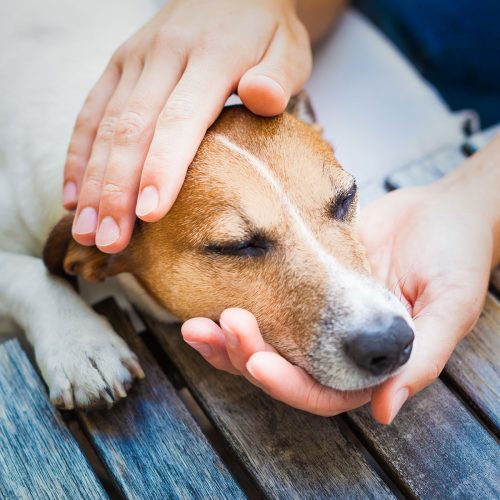If you’ve ever owned a small bird—whether it’s a parakeet, cockatiel, lovebird, or finch—you know just how charming and lively these little creatures can be. But did you know that, just like dogs, cats, and humans, small birds can suffer from dental issues too?
Now, here’s the twist: birds don’t have teeth. So, how can they possibly suffer from dental disease?
Well, what we often call “dental disease” in birds usually refers to problems with the beak—the avian equivalent of teeth, especially when it comes to eating, grooming, and interacting with the world. Beak disorders and infections can be just as painful and dangerous as dental problems in mammals, and if left untreated, they can seriously affect your bird’s health and quality of life.
In this detailed guide, we’ll explore the signs of dental (beak-related) disease in small birds, the underlying causes, what you should do, and how to prevent it in the first place.
Wait—Do Birds Have Teeth? A Quick Anatomy Lesson
Let’s clear up a common misconception.
Birds do not have teeth. Instead, they rely on a keratin-covered beak to pick up food, crack seeds, preen their feathers, and even climb. The beak is made of:
- The upper beak (maxilla)
- The lower beak (mandible)
- Rhamphotheca – the outer layer of keratin (similar to your fingernails)
So when we talk about “dental disease” in birds, we’re really referring to beak disorders, infections, malformations, and overgrowths—all of which can impact their ability to eat and thrive.
Common Causes of Beak Problems in Small Birds
Before we dive into the symptoms, it helps to understand why beak issues happen in the first place. Some of the most common causes include:
-
Poor Nutrition
A seed-only diet lacks essential vitamins and minerals, particularly calcium and vitamin A. This can lead to soft, weak beaks or improper growth.
2. Liver Disease
In many birds, especially parakeets and cockatiels, liver dysfunction can lead to overgrown or flaky beaks.
3. Trauma
Falls, cage accidents, or fights with other birds can lead to cracked or misaligned beaks.
4. Infections (Fungal, Bacterial, or Viral)
Pathogens like Candida (a yeast), Mycobacteria, or the avian polyomavirus can all affect the tissues around or inside the beak.
5. Mites
Scaly face mites (Knemidokoptes pilae) can burrow into the beak and cere (the fleshy part above the beak), causing deformities and lesions.
6. Tumors
Benign or malignant growths in or around the beak can lead to distortion and pain.
Signs of Dental (Beak) Disease in Small Birds
Birds are prey animals, which means they’re masters at hiding pain and discomfort. By the time signs are visible, the issue may have been going on for a while.
Here are the most important red flags to watch for:
1. Overgrown Beak
If your bird’s beak starts to look unusually long, especially at the tip or around the sides, it may indicate an imbalance in beak wear and growth. A healthy bird should naturally grind and trim its beak through normal activities like chewing toys or rubbing against perches.
What it could mean:
- Liver disease
- Malnutrition
- Lack of chewing materials
2. Flaky or Cracked Beak Surface
A rough or peeling beak may be a sign of:
- Vitamin A deficiency
- Fungal infection
- Poor hygiene or mites
Your bird’s beak should appear smooth and well-aligned.
3. Asymmetrical Beak
If one side of the beak looks longer, more curved, or is pushing to one side, it may be misaligned. This can make eating and grooming difficult.
What it could mean:
- Trauma
- Beak malformation
- Past injury that didn’t heal correctly
4. Changes in Eating Habits
Keep an eye out for:
- Dropping food while eating
- Picking at food without swallowing
- Taking longer to eat
- Only eating soft foods
These can all be signs of discomfort or pain in the beak.
5. Weight Loss or Poor Feather Condition
If your bird is avoiding food due to beak pain, you may notice weight loss or lack of energy. A poor diet also quickly shows in dull, brittle feathers.
6. Excessive Salivation or Discharge
Unusual wetness around the beak, or visible discharge, may indicate:
- Beak infection
- Oral abscess
- Upper respiratory illness
7. Scabs, Lesions, or Crust Around the Beak or Nostrils
Crusty or scaly lesions on the beak and cere are often a sign of:
- Scaly face mites
- Bacterial or fungal infection
8. Reluctance to Use Beak Normally
If your bird avoids using its beak to climb, chew, or preen, something is definitely wrong. Beaks are like hands for birds—if they stop using them, it’s a red flag.
What to Do If You Suspect a Beak Problem
Step one: Don’t wait. Small birds can go downhill quickly without treatment.
Here’s a step-by-step guide:
1. Call an Avian Vet Immediately
Not all veterinarians are equipped to treat birds. Find an avian-certified vet or a clinic that regularly treats exotic pets. A proper diagnosis may require:
- Physical exam
- Beak trimming (if overgrown)
- Blood tests (to rule out liver disease or infections)
- X-rays (for trauma or tumors)
- Fecal testing (for parasite-related issues)
2. Avoid DIY Trimming
Never attempt to trim a bird’s beak at home unless you’re trained to do so. Improper trimming can cause:
- Bleeding
- Nerve damage
- Infection
- Irreversible injury
Let a professional handle it, especially for birds under stress.
3. Check and Improve Your Bird’s Diet
Switching to a balanced diet can do wonders. Talk to your vet about:
- Pelleted food (formulated for your bird species)
- Fresh vegetables high in vitamin A (like carrots, kale, bell peppers)
- Occasional fruits (in moderation)
- Cut back on seeds as a primary food source
4. Provide Safe Chewing Toys
Birds need to chew—it’s how they naturally file their beaks and stay mentally stimulated. Offer toys made of:
- Untreated wood
- Mineral blocks
- Coconut shells
- Palm leaves or woven grass
Change them out regularly to prevent boredom and encourage use.
5. Monitor Hygiene and Environment
Clean your bird’s cage daily and disinfect toys and perches weekly. Watch out for:
- Moldy food
- Dirty water dishes
- Build-up of droppings
A clean environment lowers the risk of fungal or bacterial infections.
6. Treat Parasites Promptly
If scaly face mites are suspected, your vet may prescribe:
- Ivermectin (usually applied topically)
- Antifungal or antibacterial creams
- Oral medication in severe cases
7. Follow Up Consistently
Beak issues often require ongoing care, especially if they’re caused by chronic conditions like liver disease. Keep up with:
- Follow-up vet appointments
- Beak shaping and maintenance
- Nutritional supplements, if prescribed
How to Prevent Beak and Oral Issues in Birds
Prevention is always better than treatment—especially with fragile animals like small birds. Here’s how to stack the odds in your favor:
- Feed a balanced diet from the start (avoid seed-only diets!)
- Provide a variety of safe chewables
- Keep their environment clean and enriched
- Schedule yearly check-ups with an avian vet
- Watch your bird daily for small changes in behavior, weight, or appetite
Early intervention can often mean the difference between a quick fix and a life-threatening situation.
Can Dental Issues Be Fatal in Birds?
Sadly, yes. Left untreated, severe beak infections or malformations can lead to:
- Starvation
- Inability to groom or preen
- Pain, depression, and immune suppression
- Secondary infections
The good news? Most issues are treatable if caught early. Being a proactive bird parent is the best medicine.
Final Thoughts: A Healthy Beak = A Happy Bird
Caring for a small bird isn’t just about food and a cage—it’s about understanding the subtle ways they communicate discomfort. Beak health is vital, yet often overlooked. By learning to recognize the signs of “dental” disease and taking quick action, you’re not just saving your bird from discomfort—you could be saving their life.
So the next time you see your bird grinding its beak or chomping on a toy, take a moment to smile. That little beak is healthy, busy, and doing exactly what it’s supposed to do.



